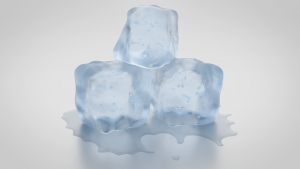How does Temperature Impact your Workouts?
Is there a difference?

Is There A Difference?
One question that seems to get asked a lot is “How does the temperature impact my workouts?”, or “Can working out in the hot/cold help me lose weight?” Well, there is a lot of different and often conflicting, information out there. This is a result of years of coaches, personal trainers, fitness enthusiasts, athletes, and researchers experimenting with different workout environments. With so much information out there it can become a little overwhelming, but we are going to try to dispel some of the myths that can not only make for a miserable workout, but also lead to injury and illness.
Heat up your Weight Loss by Icing Down

First, let’s get the myth out of the way early, you are not going to burn more calories working out in the cold than you will in the heat. I personally will take a cold workout over a hot one any day, but that is because I prefer to be cooler while working out and I am not going to mind if I burn a few less calories during my workout. Plus, I like to incorporate supplements into my workouts which can increase your metabolic rate during a workout. In this case a cold workout is the better option as well since your body will naturally be producing more heat because it is burning more calories as a result of the supplements.
The reason working out in the cold doesn’t help burn more calories is because your body is already heating up from the workout, so there is no need for it to expend extra energy to bring you temperature up. Think about it, you are still sweating even if it is cold, this is because the energy being expended during the workout is going to increase your core temperature. Once this starts your body responds by sweating to cool itself down. If you are working out in the cold though, you will not put enough extra strain on your body to burn a noticeable amount of extra calories.
With that being said, another good way to increase your calorie burn and reduce muscle soreness is a post workout ice bath. An ice bath after your workout will help prevent inflammation as well which will reduce recovery times and will help you burn additional calories since at this point your body needs the extra energy to maintain its core temperature. When your body temperature drops below a certain point your body responds by using extra energy to bing it back up so you don’t get hypothermia. Most people have found themselves shivering in the cold. This is your body’s most basic, but effective way of bringing your core temperature back up. When you shiver your muscles tense up a good bit and this generates heat and in doing this your body burns calories. In some situations you can actually burn up to 400 calories in an hour from this, but it’s not recommended to maintain this for very long because you can become hypothermic.
During an ice bath your body is going to move most of your blood to your core in order to preserve body heat. Once it has done that and your temperature continues to drop you will start to shiver. At this point you are burning extra calories for just sitting in an ice bath. Not a bad way to finish out a workout if you ask me, but again, be careful with how cold it is and how long you stay in.
Turn up the Heat to Torch Fat

I can Feel The Heat Radiating
This leads us to our next point, working out in the heat does increase the number of calories you burn from your workout. It’s not sweating itself, but the results of it that increases the calories you burn during a workout if it is hot and humid. Think about what happens when you sweat. Your skin turns red and your heart rate increases. Your skin is turning red because the blood vessels at the top are dilating to allow more blood to flow closer to the surface and help cool you off. This brings us to the second point, your heart rate increases. Since your blood vessels are dilated there is naturally less blood available. Just because your blood vessels dilate doesn’t mean the volume of blood you have has increased. Because of this your heart is having to work harder to pump the same amount of oxygen to your muscles and the rest of your body.
Now let’s take a look at the humidity aspect. Everyone knows how much worse the heat is when the humidity is high, but why is this? The answer is simple. When we sweat it is not the sweating itself that cools us down, but the sweat evaporating from your skin. If there is already high humidity and the air is saturated there is nowhere for the sweat to go, so it stays on you. Without being able to evaporate sweat loses almost all of its cooling properties. This makes sense when you think about it. Sweat is naturally going to be the same temperature as the rest of your body, so it is not going to be able to absorb anymore heat like, say a cool splash on the face, so it essentially becomes useless and your body has to work even harder to keep itself cool.
OK, let’s think about what we just went over. When you work out in the heat your body is going to have to work harder to keep cool. The main way it does this is by sweating, but this is not where the extra burn is coming from. It is actually a result of the increased work your heart is having to do to compensate for the dilated blood vessels which decreases the available volume of blood. In the end this will give you a decent increase in the calories you burn during your workout.
Precautions
So, we have established that working out in the heat can help you burn more calories, but that doesn’t mean you should just run out in the middle of the summer wearing a trash bag. When working out in the heat you increase your risk of some serious issues including dehydration and heat stroke, not something you want. With dehydration also comes an increased risk of cramps. Cramps may not sound that bad if you aren’t swimming, but I promise you, a cramp in the middle of a run can be a new level of pain. Be sure to drink plenty of water during your workout to avoid dehydration, this is going to be your biggest defense again other issues as well since the more water your body has available for use the more it can use for sweat to cool you down.
Ice baths can be just as dangerous as working out in extreme heat. Hypothermia is a very real threat when taking an ice bath. You do not want the water to be too cold, try to keep the temperature above 55 degrees. If you are using water below this, you run the risk of injury or making yourself sick as a result. It is also a good idea to have someone else who can check in on you during your ice bath to make sure everything is alright. You don’t want to pass out in ice water.
Conclusion
In the end if you want to increase your calories burned during a workout the easiest and safest way is going to be to add a pre-workout supplement. While these are not magic powders that will make you lose weight automatically, they will give you and extra boost during your workout. Most pre-workout supplements are going to work in basically the same way, they are going to ramp up your metabolism, usually with caffeine and a mix of others, which will increase your energy and increase the amount of calories you burn while at the same time giving you a more intense workout which will result in more progress being made.
Post workout ice baths can also help speed along weight loss as well as recovery. This can be especially helpful for people starting out since you are far more likely to be sore and need the extra boost at the beginning of your training. That’s not to say advanced and intermediate athletes can’t benefit from them, but the returns are going to be lower.

Temperature affecting a workout is something I really never gave thought to. You bring up some very interesting points i.e. sweating, ice baths, supplements etc. You covered all the bases on precautionary measures also. I always see pro athletes in ice baths after games and believed it to help with muscle recovery. I guess you get used to it, but the thought of getting into ice cold water does not appeal to me! Love your site!
Hey Robin thanks for the comment! Most people don’t think temperature has anything to do with your workouts. Temperature can impact your workout very much. Even though you are sweating the same in cold weather, you can become hypothermic if you spend too much time out there, and in hot weather you may not be able to cool yourself as quickly due to the lack of sweat being able to evaporate. Ice baths can help very much after workouts, you will become relaxed, your muscles will heal and you can burn a couple hundred calories while you are in there from shivering. Yes ice bathing is something you need to get used to.
-Kenny
Hi, I liked the way you stressed on how working out in different weathers can impact on your workout. I live in India, so it pretty obvious that most of the time we have a hot weather around us and when it is cold here, it just goes cold to an extent where you feel pleasant. I haven’t been including any supplements in my workout, do you think it si important to have around?
Hey Shrey! Thanks for the questions. I think its pretty cool I have someone from India able to read my posts. I hear that the weather does get pretty warm over there. I really encourage the use of supplements to help your body gain more energy and be able to recover quicker. I would recommend a Preworkout supplement to take before and a post workout supplement to take after.
-Kenny
Wow I never really thought about there being a difference between hot and cold workouts (other than thinking that hot yoga must be really uncomfortable).
But it makes more sense now. I love that you described the science behind it, rather than just stating which type is better. I honestly thought the temperature wouldn’t make a difference but it now makes sense to me why temperature matters.
Thanks for the good info!
Hey thanks for the comment! Hot and Cold workouts are definitely different, they differ in many ways that in certain situations can be harmful to you. There is science behind everything, glad I could share some the helpful science behind this. I’m glad you now know the difference.
-Kenny